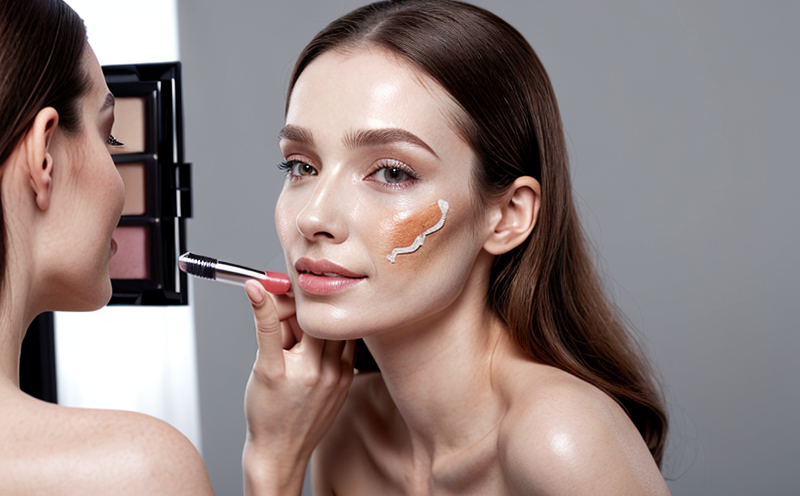Clinical Scalp Irritation Testing in Hair Care Cosmetics
Testing the dermatological and clinical efficacy of hair care cosmetics is a critical aspect of product development. Ensuring that your products are safe for consumers, especially when they come into contact with sensitive areas like the scalp, is essential for both regulatory compliance and brand reputation. This section focuses on Clinical Scalp Irritation Testing, which evaluates whether a hair care cosmetic causes adverse reactions or irritation of the scalp.
The process involves applying the product to volunteer subjects in controlled conditions and observing any signs of irritation, such as redness, swelling, itching, or scaling. This testing is particularly important for products like shampoos, conditioners, styling gels, and other hair care treatments that come into direct contact with the scalp.
The goal is to identify any potential allergens or irritants early in the product development cycle, allowing manufacturers to make necessary adjustments before launching their products. This testing aligns closely with consumer safety standards and regulatory requirements set by various global bodies such as the European Union (EU), US Food and Drug Administration (FDA), and others.
For accurate results, it is crucial to follow standardized protocols provided by reputable organizations like ISO or ASTM. For instance, ISO 21063-7:2018 provides guidelines for evaluating scalp irritation caused by hair care products. Adhering to these standards ensures that the testing process is consistent and replicable.
The test subjects are typically selected based on their hair type and condition, ensuring a diverse sample size that represents the target market. The duration of the test can vary depending on the product formulation but usually lasts for up to 48 hours after application. During this period, trained observers document any adverse reactions observed.
Proper specimen preparation is key to obtaining reliable results. Hair samples should be clean and free from any styling products that could interfere with the testing process. The hair care cosmetic sample should also be prepared according to industry standards, ensuring consistency across different batches of the product.
Instrumentation used in this type of testing includes scalp observation tools such as magnifying glasses or dermatoscopes for detailed examination. In some cases, skin conductance devices may be employed to measure changes in electrical resistance across the scalp, indicating potential irritation levels.
Scope and Methodology
| Test Parameters | Description |
|---|---|
| Product Application | The test cosmetic is applied to the scalp of the subjects following standard procedures. |
| Observation Period | A 48-hour observation period is typically used, during which any signs of irritation are recorded. |
| Data Collection | Trained observers record observations on specific criteria such as redness, swelling, itching, or scaling. |
| Repeatability | The test is conducted multiple times to ensure consistent results and reduce variability. |
The methodology described here ensures that the testing process adheres to international standards and provides accurate data for product safety evaluation. By following these procedures, manufacturers can demonstrate compliance with regulatory requirements while also gaining valuable insights into potential issues within their products.
International Acceptance and Recognition
- The European Union's Cosmetics Regulation explicitly requires scalp irritation tests to be conducted before placing hair care products on the market.
- In the United States, while there is no mandatory requirement for such testing, it is widely recommended as part of a comprehensive safety assessment.
These tests are also recognized by other regulatory bodies around the world. Organizations like the World Health Organization (WHO) and International Organization for Standardization (ISO) recommend these types of assessments to ensure product safety and consumer protection.
The acceptance of this testing method varies depending on the region, but it is generally well-accepted due to its effectiveness in identifying potential hazards early in the development process. This makes it an indispensable tool for manufacturers aiming to meet global standards and maintain a positive reputation among consumers.
Competitive Advantage and Market Impact
- Conducting scalp irritation tests can give companies a competitive edge by ensuring that their products are safe and well-received in the market. This reduces the risk of recalls or lawsuits due to adverse reactions, thereby protecting brand integrity.
- A reputation for producing high-quality, safe hair care cosmetics can attract more customers and build long-term loyalty. Consumers increasingly seek out brands they trust, especially when it comes to products that come into direct contact with their skin and scalp.
Moreover, meeting these standards enhances the overall market impact of a company’s product line. It signals to investors, retailers, and consumers alike that the brand prioritizes safety and quality, which can lead to increased sales and better customer satisfaction ratings. Companies that invest in such testing are likely to see higher demand for their products, as they demonstrate commitment to consumer health.
Competitors who fail to meet these standards may face reputational damage if adverse reactions occur post-launch, potentially leading to decreased market share. Therefore, investing in scalp irritation tests can provide a significant competitive advantage by ensuring early identification and mitigation of potential risks.





